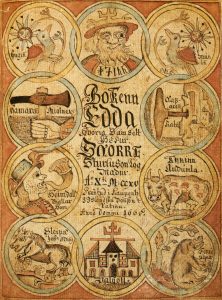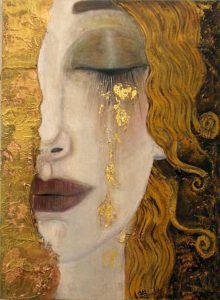British Myth and Magic
The New Forest Coven
In the summer of 1940, a coven of witches – antecedents of modern Wiccans – met in the New Forest to play their part in the fight against the Nazis. According to Gerald Gardner, the occultist and co-founder of Wicca, thirteen people met in the forest to carry out a ritual designed to stop Hitler’s invasion in its tracks. While the Nazi invasion force gathered in France, and Allied airmen clashed with the Luftwaffe in British skies, Gardner and his fellow occultists prepared their ultimate defence: a spell known as the Cone of Power. The witches formed a circle, chanting and dancing, and visualised a cone of energy rising and spreading towards Germany. Its target was Adolf Hitler. It meant him no injury – the coven’s magic was strictly pacifist. Its aim was psychic influence, to change Hitler’s mind about the invasion: to send the message, Not Here. Stay Away. Not Here.
 A few weeks later, Hitler abandoned his invasion plans. The coven claimed partial credit for his change of heart. Gardner later reported that several members of the coven died shortly after the ritual: their life-force exhausted, he believed, by the powerful magic they had produced. They had anticipated fatalities, but, Gardner claimed, had decided to go ahead anyway. If the young men of the RAF could give up their lives to save Britain from Nazism, then so could they.
A few weeks later, Hitler abandoned his invasion plans. The coven claimed partial credit for his change of heart. Gardner later reported that several members of the coven died shortly after the ritual: their life-force exhausted, he believed, by the powerful magic they had produced. They had anticipated fatalities, but, Gardner claimed, had decided to go ahead anyway. If the young men of the RAF could give up their lives to save Britain from Nazism, then so could they.
Like modern Wiccans, British ‘witches’ used rituals to focus the mind and – they believed – to invoke divine powers. They were peaceful, tolerant of other faiths and cultures, and always sought to do no harm.
Ley Lines
 In early Twentieth-Century Britain, there was an upsurge of interest in the occult and alternative forms of religion. One expression of this was the growing interest in ley lines: ancient, straight trackways in the landscape, marked at key points by places of spiritual significance. First suggested in Alfred Watkins’ ‘The Old Straight Track’, ley lines came to be seen as lines of mystical power.
In early Twentieth-Century Britain, there was an upsurge of interest in the occult and alternative forms of religion. One expression of this was the growing interest in ley lines: ancient, straight trackways in the landscape, marked at key points by places of spiritual significance. First suggested in Alfred Watkins’ ‘The Old Straight Track’, ley lines came to be seen as lines of mystical power.
The Skull of Bran
 According to legend, Bran was an early British king. When he was fatally wounded in battle, he ordered his followers to bury his head in the site now occupied by the Tower of London, with his face to the East. Bran claimed that while his head remained buried in this spot, the Angles, Saxons and other Germanic invaders would never succeed in occupying mainland Britain. Several centuries later, however, another British king – possibly King Arthur – had Bran’s skull disinterred. Shortly after that, the Angles and Saxons invaded and conquered Britain.
According to legend, Bran was an early British king. When he was fatally wounded in battle, he ordered his followers to bury his head in the site now occupied by the Tower of London, with his face to the East. Bran claimed that while his head remained buried in this spot, the Angles, Saxons and other Germanic invaders would never succeed in occupying mainland Britain. Several centuries later, however, another British king – possibly King Arthur – had Bran’s skull disinterred. Shortly after that, the Angles and Saxons invaded and conquered Britain.
Goddesses of The Few: The Morrigan
The Morrigan was a goddess worshipped by the ancient Celts, people indigenous to Ireland, Scotland, Wales and parts of England. She was the goddess of war and battle, often appearing in the form of a carrion crow or a raven, and she is also associated with fate and with the land. Her name means ‘Phantom Queen’ or ‘Great Queen’.
Image of the Morrigan by Julia Helen Jeffrey at Stonemaiden
Images
- Gerald Gardner
- Map of the Saint Michael ley line in Southern England
- The Head of Bran – John Everett Millais
The Nazis and the Occult
Occult and mystical beliefs were an essential part of Nazism. Nazi occultism was, like everything the Nazis believed, based on racism, particularly anti-Semitism (hatred of Jews).
Nazis believed that the Germanic people were racially superior to all other peoples, and that they were – literally – favoured by God. The Aryan race – as they called themselves – were believed to have natural magical powers which had lain dormant for centuries, but which, with careful breeding, could be revived. Nazis held that other ‘lesser’ races were so corrupt and degraded that they would try to thwart this quest for human perfection, and must therefore be repressed or exterminated.
The Swastika
 The swastika was not invented by the Nazis. It was originally an ancient Sanskrit symbol for well-being and good fortune, and is still sacred to some faiths (such as Hinduism). Its use is banned in modern Germany.
The swastika was not invented by the Nazis. It was originally an ancient Sanskrit symbol for well-being and good fortune, and is still sacred to some faiths (such as Hinduism). Its use is banned in modern Germany.
The Black Sun
 The Black Sun or Sun-Wheel is said to represent a multiple swastika. Its origins are unknown, but the Nazis saw it as having great occult significance. Its design is set into the floor of Wewelsburg Castle, the occult centre of the Nazis’ planned Reich. It is sometimes used by neo-Nazi societies today, and its use is banned in Germany.
The Black Sun or Sun-Wheel is said to represent a multiple swastika. Its origins are unknown, but the Nazis saw it as having great occult significance. Its design is set into the floor of Wewelsburg Castle, the occult centre of the Nazis’ planned Reich. It is sometimes used by neo-Nazi societies today, and its use is banned in Germany.
 Wewelsburg Castle: Himmler’s New Jerusalem
Wewelsburg Castle: Himmler’s New Jerusalem
Wewelsburg is a Renaissance castle located near the village of Wewelsburg, northeast of North Rhine-Westphalia, Germany. In 1934 it became a spiritual centre for the SS, under Heinrich Himmler. Himmler planned to turn the castle – whose triangular layout he believed to have occult significance – into the ‘Centre of the World’, the heart of the Third Reich’s new mystical beliefs. The SS are said to have carried out secret rituals there, and some of the main halls are marked with swastikas and Black Suns.
The Nazis abandoned Wewelsburg in 1945, and it is currently a museum and a youth hostel.
Runes
Runes are letters from the runic alphabets used by some ancient Germanic and Scandinavian peoples. They are thought to have been used for the purposes of magic or fortune-telling. There was a revival of interest in runes amongst 19th and early 20th Century occultists and mystics. The Nazis adopted them as symbols and, like the swastika, imbued them with their own occult and racist meanings. Today runes are used for the purposes of divination.
See also: Cold City: Runes
 The Eddas
The Eddas
The Poetic Edda and the Prose Edda are collections of Old Norse writings, and are the major source of stories about the Viking gods. The author of the Poetic Edda (or Elder Edda) is unknown, although authorship of the Prose Edda (Younger Edda) is usually ascribed to the Icelandic writer Snorri Sturluson (1179-1241). The Eddas narrate the story of the gods from the creation of the world to the Norse apocalypse, Ragnarok, and tell tales of Germanic heroes and heroines. The Nazis regarded the Eddas as sacred and believed that they supported Nazi beliefs, although this is not the case.
Goddesses of The Few: Freya
 Freya (also Freyja or Freja) is the Viking and Germanic goddess of love and beauty and of war. Along with Thor, Odin and Loki, she is one of the major deities of Asgard, the heavenly abode of the Norse gods. She is the most beautiful of the goddesses, owner of the magical necklace Brisingamen and an airborne chariot drawn by cats. She is one of the ‘choosers of the slain’, who selects the souls of the bravest warriors to attend her.
Freya (also Freyja or Freja) is the Viking and Germanic goddess of love and beauty and of war. Along with Thor, Odin and Loki, she is one of the major deities of Asgard, the heavenly abode of the Norse gods. She is the most beautiful of the goddesses, owner of the magical necklace Brisingamen and an airborne chariot drawn by cats. She is one of the ‘choosers of the slain’, who selects the souls of the bravest warriors to attend her.
Freya is said to weep tears of pure gold, and is therefore described as ‘beautiful in tears’. Her name means ‘The Lady’.
Images
- Swastika on Nazi flag
- Swastika used in 21st Century Hindu festival
- Wewelsburg Castle from the air
- Wewelsburg’s ‘Hall of the Generals’, with Black Sun mosaic
- Cover of the Prose Edda (18th Century)
- Freya, Cats and Angels – Nils Blommer
- Freya’s Tears – Gustav Klimt
Morrigan image by Julia Helen Jeffrey – see her artwork at Stonemaiden. Other original artwork by Peter O’Rourke.
To the best of my knowledge, all other images are in the public domain. If I have mistakenly used one that isn’t, please let me know and I’ll remove it immediately.




